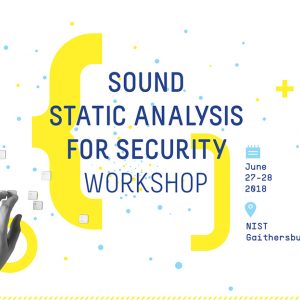by
Yannick Moy

Two Days Dedicated to Sound Static Analysis for Security
AdaCore has been working with CEA, Inria and NIST to organize a two-days event dedicated to sound static analysis techniques and tools, and how they are used to increase the security of software-based systems. The program gathers top-notch experts in the field, from industry, government agencies and research institutes, around the three themes of analysis of legacy code, use in new developments and accountable software quality. Here is why it is worth attending.